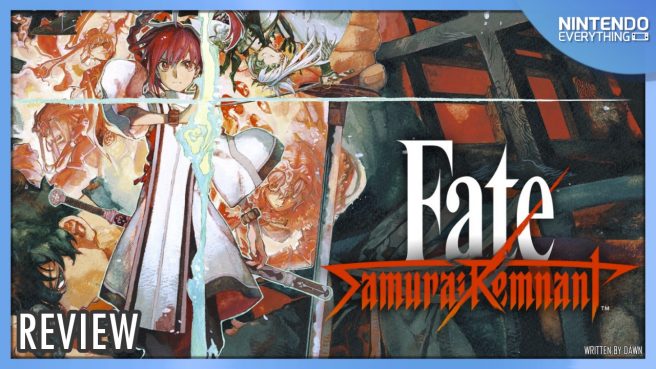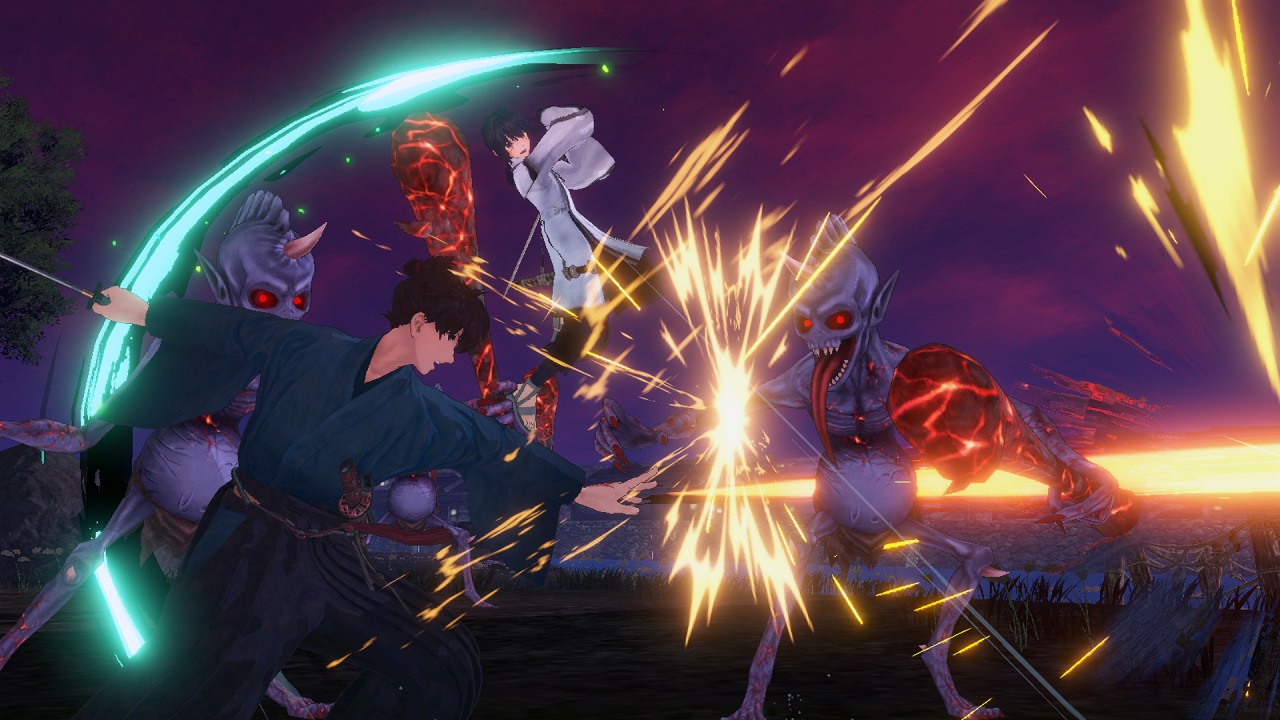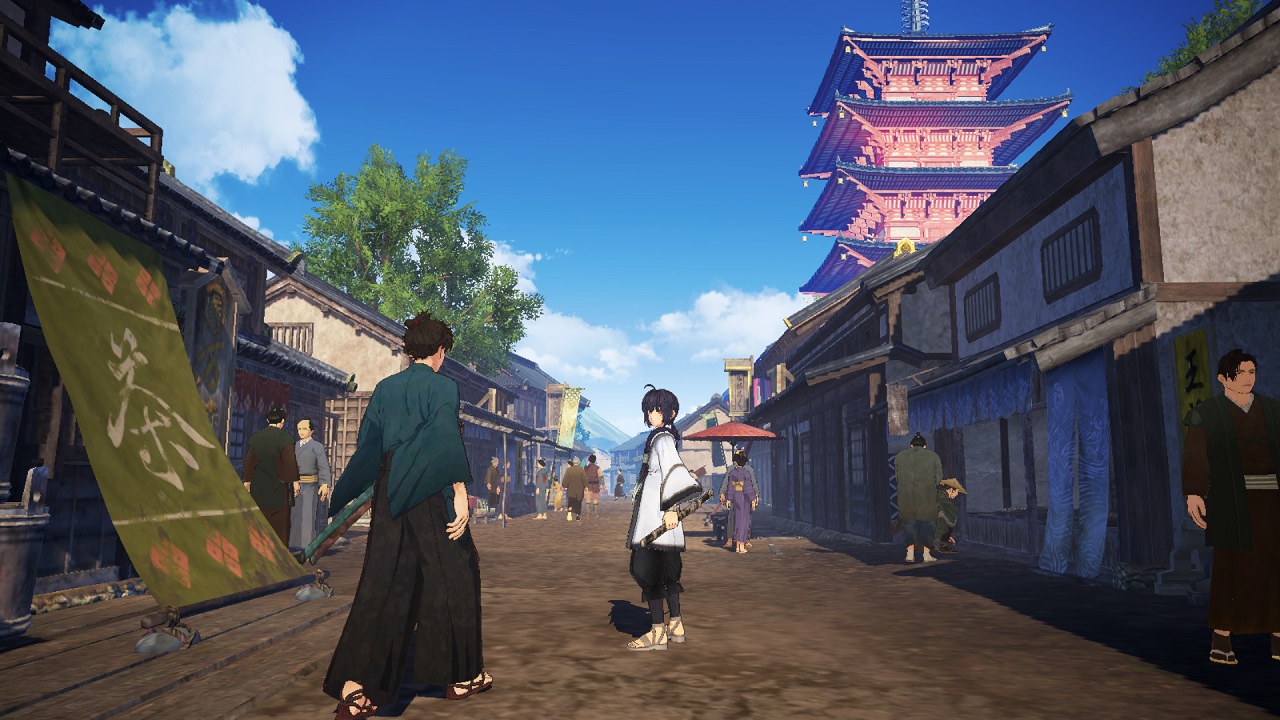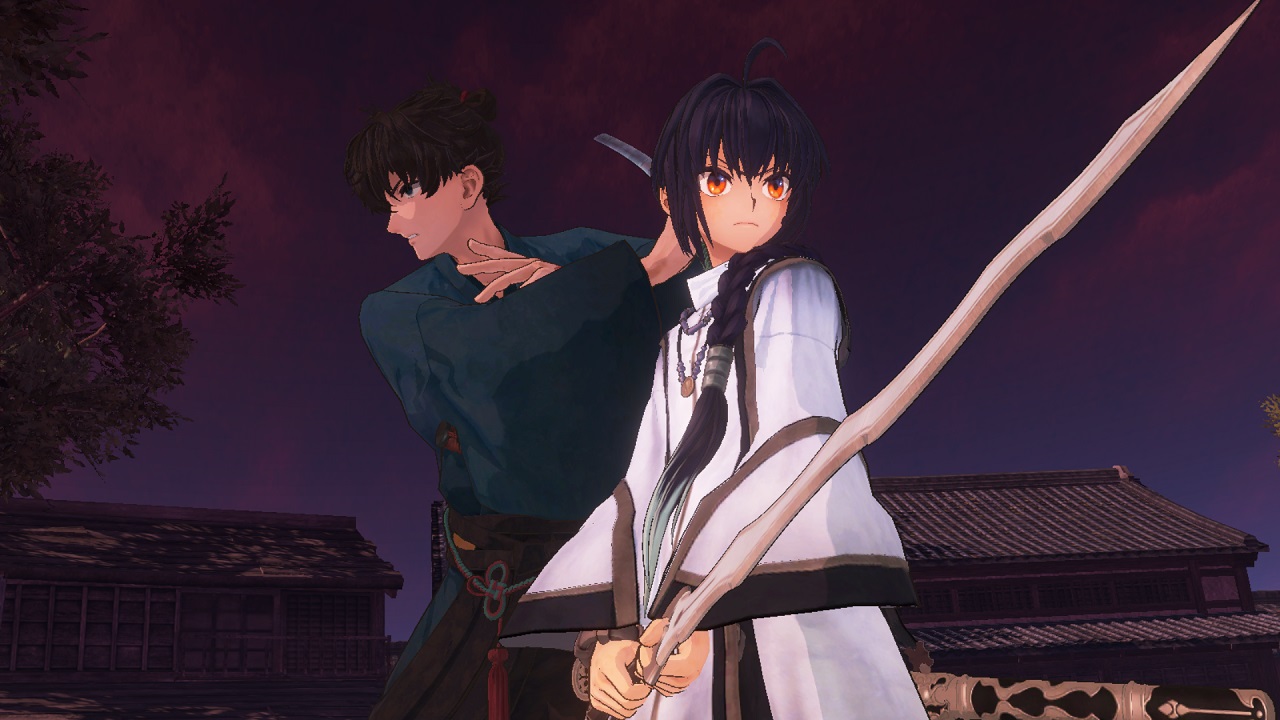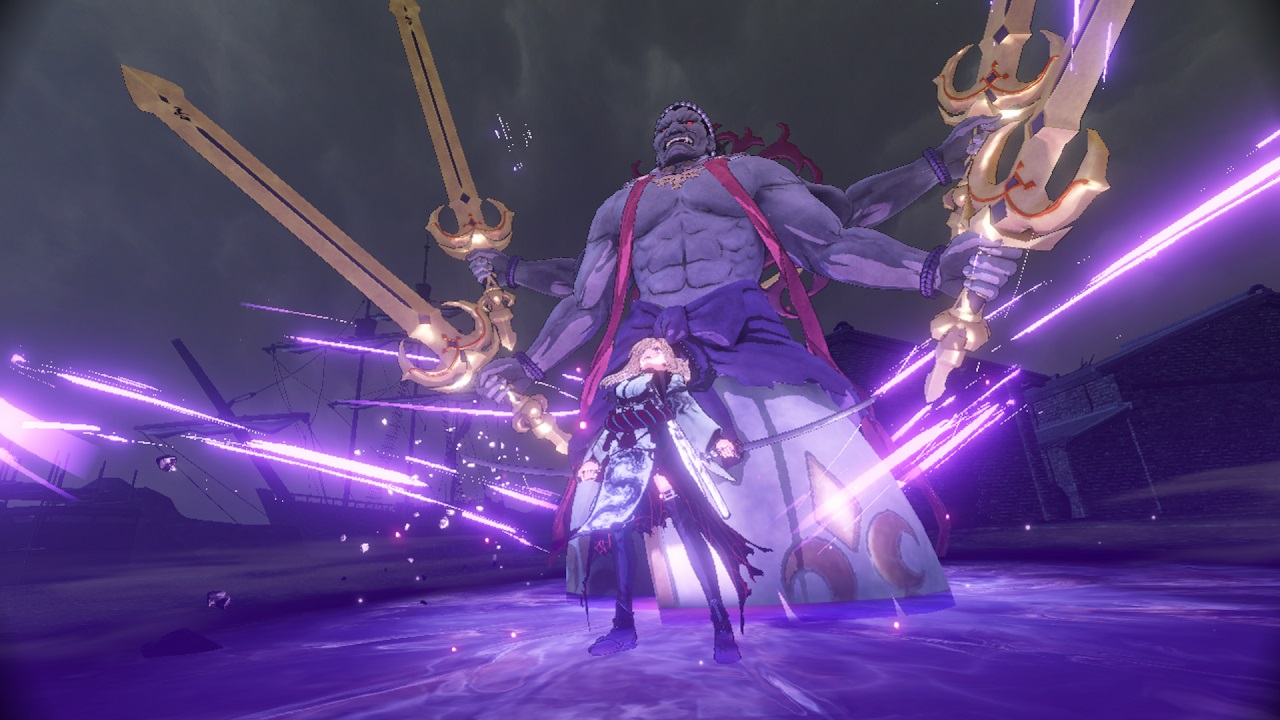System: Switch
Release date: September 29, 2023
Developer: Omega Force
Publisher: Koei Tecmo
Although Koei Tecmo has slowed down in recent years with numbered Dynasty Warriors games, one thing it has not let up on are crossover titles, which takes the familiar hack-and-slash formula and gives it a unique twist drawn from another franchise. The latest such crossover is Fate/Samurai Remnant, which takes its inspiration from Type-Moon’s Fate series, an exhaustively convoluted amalgamation of various media that started life as a visual novel in 2004. Despite a few visual hiccups on Switch, Fate/Samurai Remnant is far greater than the sum of its parts, and is a fantastic experience that is an easy recommendation for both newcomers and series veterans for both franchises.
Fate/Samurai Remnant tells the story of Iori Miyamoto, who finds himself caught up in the Waxing Moon Ritual, a contest between a group of seven Masters and their Servants, famous historical figures who have been placed in one of several classes based upon their legend in life. Their prize for victory is to have their wishes granted. It’s a setup that fans of the Fate franchise will be familiar with by this point, and is told in a way here that makes both accessible to newcomers and fresh for fans who are more familiar with the intricacies of the various Holy Grail Wars that have happened across the franchise. Outside of a few cameos from Servants who have featured in other installments in the franchise, Fate/Samurai Remnant steers well clear of the convoluted mess that is the wider Fate series canon and sticks to telling its own story.
Although the pacing is often painfully slow and gets bogged down by particulars (especially in its earlier chapters) Fate/Samurai Remnant explains itself in a very organic way, and it’s not difficult to follow along. There is a much heavier emphasis on the story here than in other Warriors titles, and for both better and worse the game takes its time in making sure that you’re familiar with the world, its concepts, and its characters, even during times when you wish it would hurry up and get to the point, or stop throwing cutscenes at you and let you play the game for a while. This is not a tale of non-stop action and drama, reserving its more intense and significant combat for key moments and building up to them, rather than throwing you into successive battles stage-by-stage for the entirety of the game. Initially this can be quite frustrating, as you’ll be playing through unremarkable combat encounters or wandering the city streets in short ten minute bursts, only to then be thrown into dialogue that can go on for twice that.
In keeping with its visual novel roots there are also multiple endings based upon the choices that you make during a playthrough; thankfully, these are very clearly signposted and it is not difficult to manipulate the game to get the ending you want, and there is also a New Game+ option for those who want to experience everything the game has to offer. This allows you to take a slightly more active role in shaping events, and become more invested in the wider cast. Although each of the game’s various Servants has their own clearly defined personality and rich history denoted by the historical figure they represent, they aren’t explored to any great depth during the game unless you choose to follow a particular route. The main focus of the story is on Iori and Saber, and there is a lot of time and effort put into developing the dynamic between them, both during combat and outside of it, which I found made the story more engaging and a lot more personal.
Combat in Fate/Samurai Remnant is built upon the standard hack-and-slash gameplay of the Warriors series, and if you’ve ever played a game in Koei Tecmo’s extensive franchise before you’ll be right at home the minute the game throws you into its tutorial battle. Even if you haven’t, the basics are simple enough to pick up that it feels satisfying and comfortable from the get-go. You’ll play primarily as Miyamoto Iori, who can string light and heavy attacks together for a series of easy to execute, satisfyingly meaty combos. He also has various sword stances which prevent the combat from becoming too monotonous over time, as each alters the general flow of combat: your starting Earth Stance is a much slower and heavier hitting approach than the faster-paced Water Stance, for instance. You can also use spells, command your Servant to unleash skills, and team up with them for special attacks, although these are all limited actions that you will need to time wisely for the best effect.
As well as your generic mortals and monsters there are also larger, more powerful enemies that have a guard gauge that you will need to break by attacking them when they’re vulnerable (clearly indicated by a blue aura) before you can damage them. As Iori, combat is quite nuanced, requiring you to be more aware of your surroundings and what you’re using, rather than mashing buttons and watching enemies explode. While facing normal enemies is relatively safe, there is a sense of real vulnerability when up against enemy Servants: as a mere mortal, Iori is no match for the heroes of the past, and a full on approach will see you meet a quick end. This turns battles into a struggle for survival, where your general aim will be to build up the gauge through repeated hits so that you can either unleash Servant skills to more quickly deplete the guard gauge or, ideally, take control of your Servant directly.
Controlling Servants in battle is much more meaningful because of Iori’s lesser capabilities, as you can unleash devastating, flashy combo attacks that are the signature of Warriors titles, allowing you to cut through mobs like paper and stand on equal footing with Servants. It does mean that combat can become frustrating when it takes an agonizingly long time to chip away at your opponent’s guard, but the payoff for your perseverance is extremely rewarding, and I found that this created an enjoyable mix of both more technical combat that demanded my attention, and mindless button-mashing fests where I could watch just the special effects. Thematically this also works extremely well with the Fate series, and draws a clear divide between Iori’s abilities and that of the Servants.
Occasionally the game also will pit you against opponents on the world map in a contest for ley lines, in an interesting turn-based battle across a web-like grid. Taking control of ley lines will increase your stats temporarily, and you can cut opponents off and eliminate them entirely if you claim their ley lines and they have no link back to their base. These are time-limited, and I found them to be a nice change of pace from the standard hack-and-slash affairs of regular combat encounters. Enemies will slowly move towards your base, throw up bounded fields that prevent you from accessing their location, and if you land on the same space, will engage you in a small arena in standard combat, with additional rewards if you defeat them quickly.
Fate/Samurai Remnant has a number of smaller supporting systems that add a further dimension to its combat, and allow for some customisation to fit a more personalized playstyle. As you gain levels you will also gain skill points, which can be invested in quite an extensive skill tree: this allows you to improve your general stats, unlock additional spells, and focus on improving your abilities in a particular stance. A lot of these have pre-requisites to unlock (for example, you’ll need to use spells to unlock additional spells) making them a long-term goal, rather than a shortcut to power: unlocking new skills takes a lot of time and effort outside of the combat encounters you’ll be forced into as part of the story. You can also customize Iori’s swords with different sword mountings, which provide useful passive effects and a nice cosmetic change, and upgrade your workshop for more useful abilities, although the cost of resources for these is significantly higher as you might expect. I found the sense of progression here to be quite satisfying, as it reflected Iori’s character growth through the game: towards the end of the game, thanks to the upgrades through these systems, I was able to fight on almost equal footing with Servants which had cut me down with ease when I first started.
Outside of combat, your time will be spent exploring the various districts of Edo, which are maze-like areas filled with shops and smaller side activities. Larger areas may have combat encounters against generic enemies you can take advantage of for additional experience and materials, and there are also side missions in the form of Digressions which you can undertake; these are usually in the service of Rogue Servants, neutral parties which have appeared as part of the Ritual but aren’t tied to a specific Master. There are also sub-missions you can take on and will complete naturally as you progress, as they are typically tied to feats in combat: for example, killing a specified number of enemies in a particular stance.
The districts of Edo feel authentic to the time period and I found them quite enjoyable to explore: as a stranger to the time period, Saber will repeatedly run off as her attention is drawn to something, and interacting with her will often result in an item reward, a small snippet of information about the era, or just a little banter between her and Iori, which really brings each area to life and makes exploration rewarding. The larger map that you can bring up is notably lacking in detail regarding points of interest, generally only displaying shops, key NPCs, and things you have already found, and so the twists and turns of the streets can become confusing due to how similar everything looks. Fortunately, navigating to where you need to go is not overly difficult, as pressing in the right control stick will bring up a guidance system which will lead you to where you need to go.
Fans will recognize the signature art style of Rei Wataru’s character portraits in Fate/Samurai Remnant, and the illustrations here perfectly complement the anime-style aesthetics and character models. Although they are only partially animated, I found there was more than enough expression and variety here to offset the occasionally unchanged character models, and they’re all beautifully detailed.
However, in every other aspect of its visuals, Fate/Samurai Remnant feels like it is perhaps a little too ambitious for the Switch. Areas are notably lacking in detail and often appear sharply pixelated, an effect that is actually compounded in handheld mode. Cutscene quality is generally higher than the in-game graphics, but can become blurred during fight sequences (which is generally what cutscenes are for in the game) and it can be difficult to make out what is going on as special effects explode on the screen at a slightly lower resolution, and it’s not the eye candy that it is clearly meant to be.
Although combat is relatively smooth, when wandering the city streets the performance takes a sharp nosedive, with some erratic slowdown and very noticeable NPC pop-in as the screen gets busier. This does not make it an unplayable experience in my opinion, but it does make it a slightly lesser experience on the Switch when compared to other platforms which do not share these issues. If you’re particularly sensitive to performance issues and want a consistently smooth experience or higher quality visuals, this might be something worth considering.
The Verdict

Despite its initially slow pacing, Fate/Samurai Remnant delivers an extremely satisfying story and gameplay experience, and feels far greater than the sum of its parts. The dynamic between Iori and Saber remains interesting and entertaining to watch throughout the story, and despite its standalone nature there is more than enough here in fanservice to satisfy fans of the franchise. If you have the option of playing it on another system I would suggest weighing your options and deciding how much you value handheld convenience at the cost of consistent performance, but this is a game I wouldn’t hesitate to recommend regardless of your preferences.
Fate/Samurai Remnant copy provided by the publisher for the purposes of this review.
